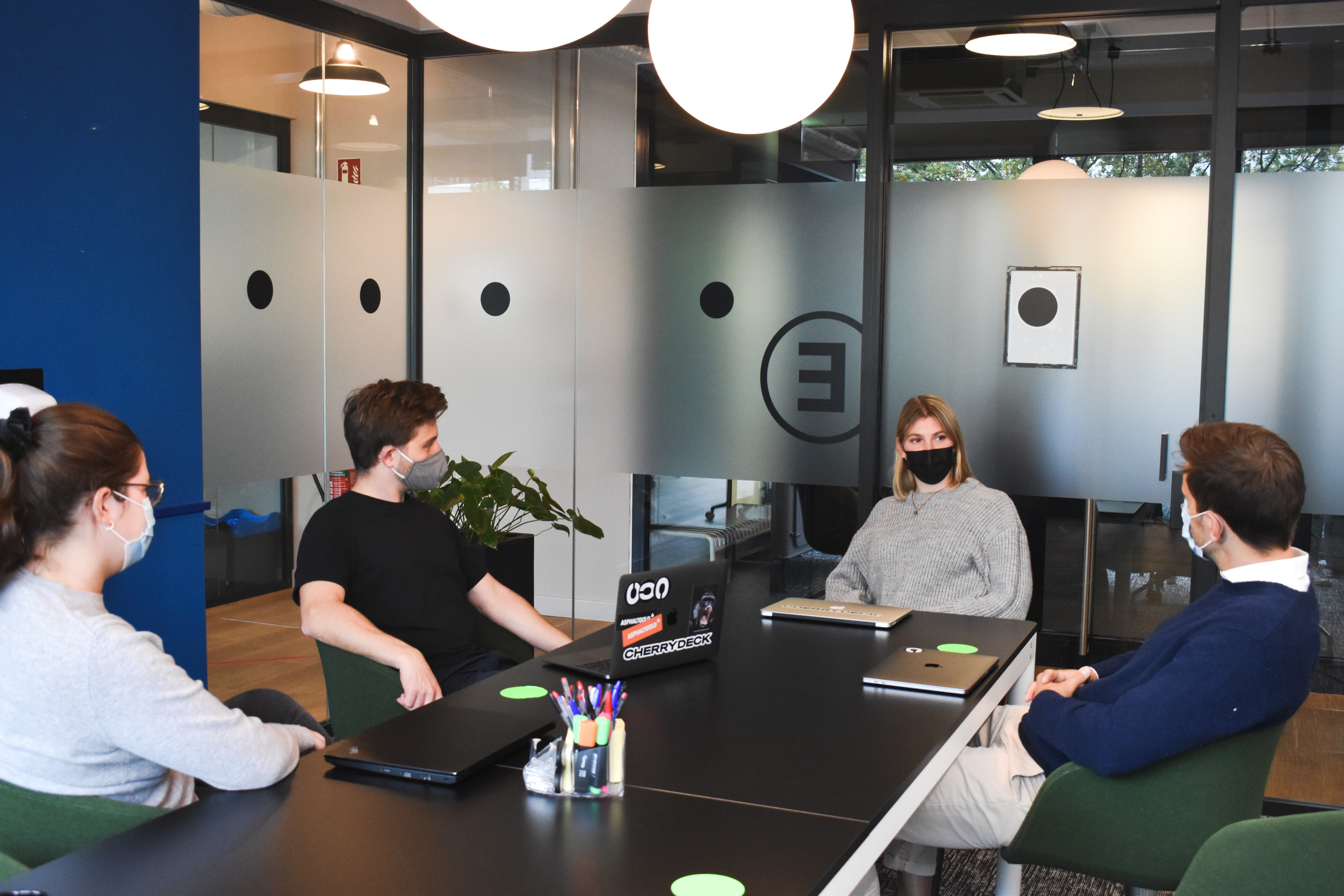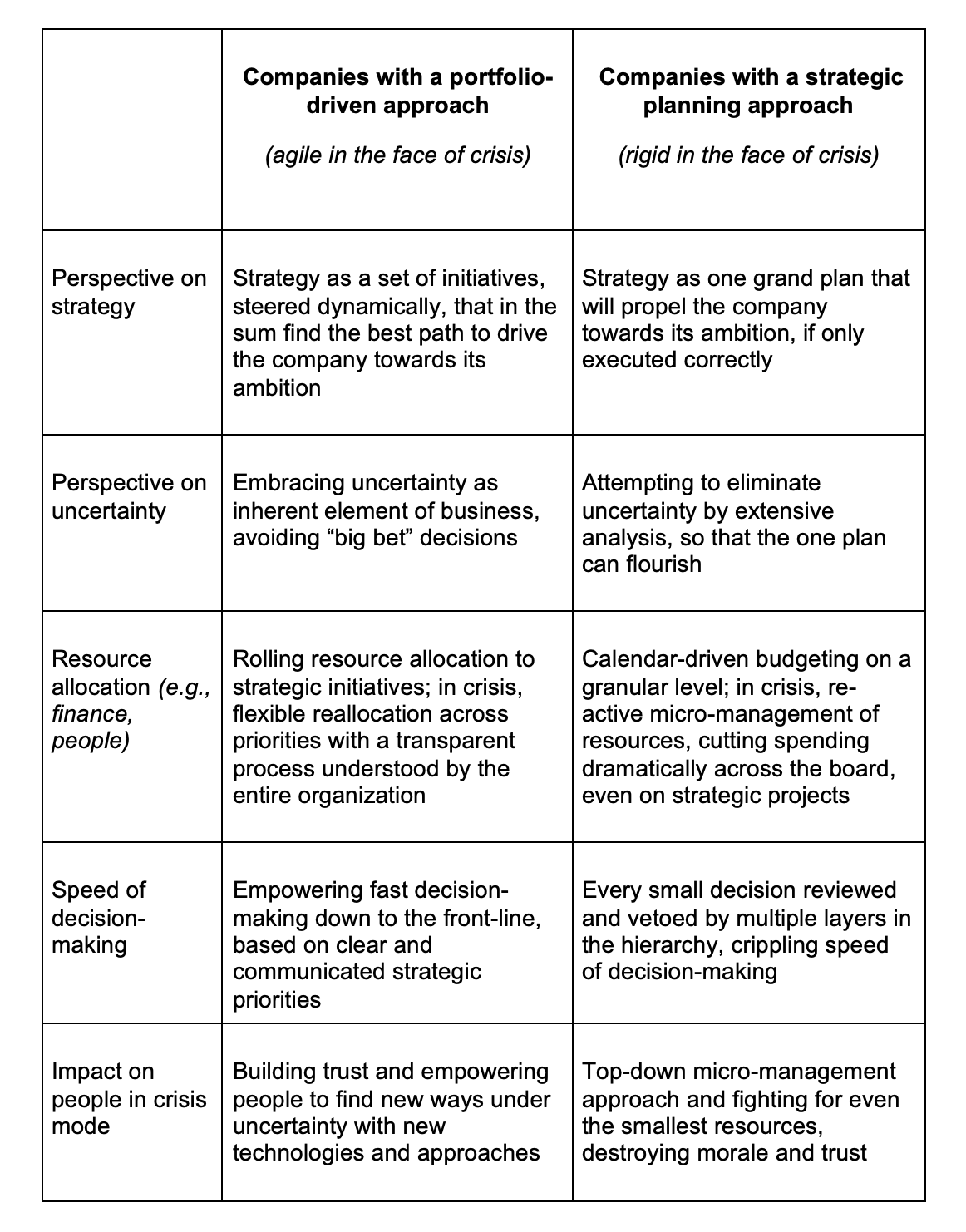California Management Review
California Management Review is a premier academic management journal published at UC Berkeley
by Samuel Loher and Massimo Garbuio

Image Credit | Cherrydeck
There is no doubt that most companies had their approach to corporate strategy tested with the global pandemic crisis. It is one thing to take decisions and allocate resources in the frame of an annual budgeting cycle, within a clear structure and timeline. It is a different story to do so in the face of the daunting uncertainty brought by the Covid crisis. No matter which forecasting tools we use, we are left at the mercy of a disease that we cannot predict and politicians that close borders and put cities in lockdown.
“Agility as the Discovery of Slowness” by Christiane Prange
“When Agile Harms Learning and Innovation: (and What Can Be Done About It)” by Maria Carmela Annosi, Nicolai Foss, & Antonella Martini
“The Blinkered Boss: How Has Managerial Behavior Changed with the Shift to Virtual Working?” by Julian Birkinshaw, Maya Gudka, & Vittorio D’Amato
Conveniently, for the past few years it has been proclaimed that companies need to be more “agile” to be competitive and to prevail in today’s business environment. Fortunately, many companies have managed to transform project work, software development and business development efforts to be more agile,[1]and achieve increased speed and nimbleness in these areas of operations.[2] Agility is a one of four key pillars of strategy in in companies that will excel during and after the pandemic.[3]
As time passes, the pandemic is putting even more emphasis on agility. This triggers a critical question: how can a company become more agile in the approach to strategizing and the way they steer the company through turbulence? To prevail amidst such encompassing and sudden uncertainty, agility is required on the strategic level, where decisions are made on direction, priorities and ultimately resource allocation - the fuel for transformation and progress.
We have observed that companies that operate their strategic engine with a portfolio approach, dynamically steering and driving a set of strategic initiatives forward, were able to handle the disturbing ripple effects of the pandemic with astonishing effectiveness. In the last years, such an approach to strategy has been adopted by companies already facing substantial amounts of disruption and uncertainty in their core business before the pandemic hit. You find these agile champions across various industries, such as automotive, telecom, retail, financial technology and healthcare. They have in common that their challenging business environments have made them more adept at identifying new arising opportunities and seizing them quickly, making them fitter to prevail throughout the covid-crisis[4]. Two impressive examples are Moderna and Pfizer, who have been able to develop, produce and distribute vaccines in record time, as it has never been done before. Their strategic resource allocation and decision making processes must have elements of what we define as “portfolio-driven approach” to strategy. Here are three things that such agile champions do differently.[5]
First, the top management’s alignment on the few strategic initiatives that are paramount to the company’s prosperity provides much needed clarity in times of stability, but is even more important in times of crisis. This clarity of priorities increases decision making speed and helps with communication and acceptance of decisions throughout the organization.
Second, it supports effective resource deployment for strategic long-term initiatives, while operative short-term activities can be stopped as a consequence of the unfavorable top-line development.
Third, management teams in such organizations typically understand their role of setting the priority, the direction and ensuring sufficient resources are at hand – but are also skilled in delegating decision-making to the initiative teams, empowering them to tackle the uncertainties faced with their best efforts. In the end, this act of empowerment increases the decision-making speed and effectiveness in dealing with uncertainty.
At the same time, we observed companies that did not have the same level of clarity on strategic priorities, neither across their top management nor within the broader organization and did not have an agile management process in place. These companies were not able to adapt and fell into a reactive mode of rigid resource management, questioning every project, initiative and expenditure beyond a predetermined cash amount. The lack of alignment on priorities resulted in halting all projects, both operational or strategic, leading to frustration and in-fighting for resources within teams. Time and resources ended up being spent to prove their contribution to the overall strategy. What was the result? Months of lost time which could have been used addressing strategic initiatives, lack of trust in the strategic acumen of the management, frustrated project teams that do not feel empowered to take their own decisions, and no effective way to handle any new external shock that might come in the still gloomy post-Covid economic environment.
These cases are very common reactions to the pandemic, which we observed from our interaction with managers and executives. The company you work for probably resembles one of these two extremes. Both types might have been very successful in the absence of a crisis. However, their initial reaction to the pandemic and the chain of actions and reactions in the following months could not be more different. Here are some dimensions in which these two extreme cases differ.

We are convinced that portfolio-driven companies can leverage their strategic agility with lasting impact. Fast decision making in the face of uncertainty, enabled by a portfolio approach to strategy, built on the clarity and alignment of priorities in the top management, produce companies that can avoid the crippling crisis-paralysis. These agile companies will thrive in uncertain situations and can leverage their competitive position sustainably.[6] On the other hand, rather rigid companies which are unable to maneuver themselves out of uncertain situations, will struggle to survive. If you experienced the second scenario in your company over the last year and a half, we suggest that you review and challenge your current approach to strategy.
[1] Massimo Garbuio, “Private capital owned companies have an advantage in times of crisis,” Sydney Business Insights, September, 2020, accessed August 18, 2021, https://sbi.sydney.edu.au/private-capital-owned-companies-have-an-advantage-in-times-of-crisis/?utm_source=rss&utm_medium=rss&utm_campaign=private-capital-owned-companies-have-an-advantage-in-times-of-crisis.
[2] Massimo Garbuio and Dreu Harrison, “The agile working style started in tech but it could work for banks,” The Conversation, May 7, 2017, accessed August 18, 2021, https://theconversation.com/the-agile-working-style-started-in-tech-but-it-could-work-for-banks-77104.
[3] Massimo Garbuio, “Strategy planning 2021: Four areas to test,” Sydney Business Insights, December 2020, accessed August 18, 2021, https://sbi.sydney.edu.au/strategy-planning-2021-four-areas-to-test/.
[4] Jordan Bar Am, Laura Furstenthal, Felicitas Jorge, and Erik Roth, “Innovation in a crisis: Why it is more critical than ever”, June 17, 2020, accessed August 18, 2021, https://www.mckinsey.com/business-functions/strategy-and-corporate-finance/our-insights/innovation-in-a-crisis-why-it-is-more-critical-than-ever; Quentin Jadoul, André Nascimento, Olli Salo, and Renato Willi, “Agility in the time of COVID-19: Changing your operating model in an age of turbulence,” November 18, 2020, accessed August 18, 2021, https://www.mckinsey.com/business-functions/organization/our-insights/agility-in-the-time-of-covid-19-changing-your-operating-model-in-an-age-of-turbulence.
[5] To learn more about the concept of strategic agility discussed in this article, see also Michael Erzinger, Lukas E. Baer and Samuel Loher, “Strategic Agility”, 2020, and www.strategicagility.rocks
[6] Thomas C. Powell, “Strategy as diligence: Putting behavioral strategy into practice,” California Management Review, 59/3, (2017): 162-190.